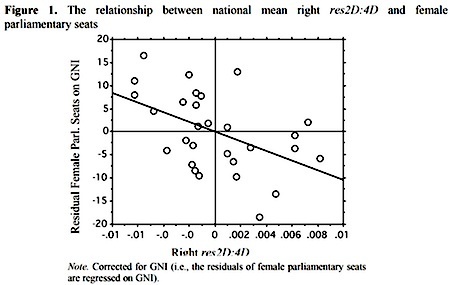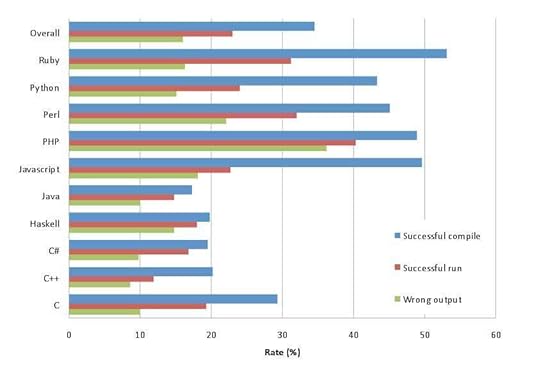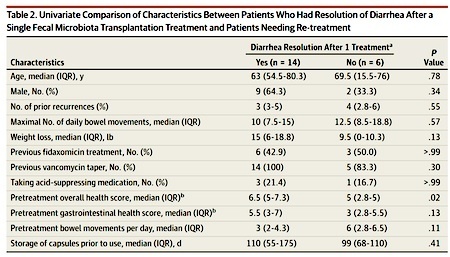Marc Abrahams's Blog, page 369
October 14, 2014
The Artificial Tree Electric Generator (patent)
HRL Laboratories – formerly the (Howard) Hughes Research Laboratories – have just been granted a US patent for their ‘Power generation through artificial transpiration ‘ invention.
The power system – which could perhaps be described as an ‘artificial tree’ – generates power by drawing water through a turbine, driven by pressure differences caused by transpiration through its artificial leaves.
The patent doesn’t specify the likely power output of the structure, though it does relate that “Coastal Redwoods in the state of California [...] generate pressures >-1 MPa, which is equivalent in magnitude to a 100 m waterfall.”

The Artifical Tree Electric Generator (patent)
HRL Laboratories – formerly the (Howard) Hughes Research Laboratories – have just been granted a US patent for their ‘Power generation through artificial transpiration ‘ invention.
The power system – which could perhaps be described as an ‘artificial tree’ – generates power by drawing water through a turbine, driven by pressure differences caused by transpiration through its artificial leaves.
The patent doesn’t specify the likely power output of the structure, though it does relate that “Coastal Redwoods in the state of California [...] generate pressures >-1 MPa, which is equivalent in magnitude to a 100 m waterfall.”

Further findings in the matter of Stronzo Bestiale
Vito Tartamella, in Parolacce, his blog about science and profanity, provides further information in the matter of Stronzo Bestiale (the question of the existence of whom we wrote about a few days ago, prompted by a report in Retraction Watch). Tarmatella’s Stronzo Bestiale report begins:
Would you read a paper written by Stronzo Bestiale (Total Asshole)? A dose of mistrust would be justified: the name says it all. Yet, in 1987, professor Bestiale, supposedly a physicist in Palermo,Sicily, authored major papers in prestigious scientific peer reviewed journals such as the Journal of Statistical Physics, the Journal of Chemical Physics and the proceedings of a meeting of American Physical Society in Monterey.
Given that surnames always intrigued me (they are the subject of my first book), I tried to find thisperson in Italian telephone directories. In Italy there are 7 Bestiale, mostly in Piedmont. None of them, however, has the name Stronzo (Turd or a Asshole: who would call their own son that?);between the Veneto and Trentino-Alto Adige there are 4 Stronziero, but this is also a surname.
In fact, Stronzo Bestiale does not exist as confirmed, when those scientific papers were published 27 years ago, by the then Chancellor of the University of Palermo, Ignazio Melisenda Giambertoni(another unusual surname!).
So I decided to investigate more thoroughly….
(Thanks to investigator Scott Langill for bringing this to our attention.)

Further finger news from Prof. Manning: Gender Inequality across nations
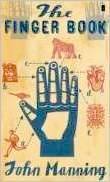 Still more finger-ratio insights from Professor John T. Manning, the father of finger-length studies. He has a new study:
Still more finger-ratio insights from Professor John T. Manning, the father of finger-length studies. He has a new study:
“Digit ratio (2D:4D) and gender inequalities across nations,” John T. Manning, Bernhard Fink, Robert Trivers, Evolutionary Psychology, 12(4), 2014, 757-768. The authors write:
“Gender inequality varies across nations, where such inequality is defined as the disproportionate representation of one sex over the other in desirable social, economic, and biological roles (typically male over female). Thus in Norway, 40% of parliamentarians are women, in the USA 17%, and in Saudi Arabia 0%. Some of this variation is associated with economic prosperity but there is evidence that this cause and effect can go in either direction. Here we show that within a population the average ratio of index (2D) to ring (4D) finger lengths (2D:4D)… is correlated with measures of gender inequality between nations…. In short, the more similar the two sexes were in 2D:4D, the more equal were the two sexes in parliamentary and labor force participation.”
Here’s further detail from the study:

‘Fat fingers’ and computer programming languages
The ‘Fat Finger Syndrome’ is a semi-affectionate nickname used by computer programmers – meaning ‘making typing errors’. As anyone who has tried their hand at programming will know, a seemingly tiny error (for a human), for example simply substituting a ; for a : can render a programme completely unusable. But it seems some programming languages are (far) more tolerant of ‘Fat Fingers’ than others. Professor Diomidis Spinellis, and colleagues Vassilios Karakoidas, and Panos Louridas of the Athens University of Economics and Business set out to compile a Fat Finger tolerance chart.
“In practice, the errors that we artificially introduced into the source code can crop up in a number of ways. Mistyping-the ‘fat fingers’ syndrome-is one plausible source. Other scenarios include absent-mindedness, automated refactorings, gone awry (especially in languages where such tasks cannot be reliably implemented), unintended consequences from complex editor commands or search-and-replace operations, and even the odd cat walking over the keyboard.”
The results of their tests were comparatively dramatic:
Full det4ils are to be found in : Diomidis Spinellis, Vassilios Karakoidas, and Panagiotis Louridas. Comparative language fuzz testing: Programming languages vs. fat fingers. in : PLATEAU 2012: 4th Annual International Workshop on Evaluation and Usability of Programming Languages and Tools—Systems, Programming, Languages and Applications: Software for Humanity (SPLASH 2012). ACM, October 2012. (doi:10.1145/2414721.2414727)
Also see: Some recent (Oct.2014) news about Fat Finger trouble.

October 13, 2014
Alrighty: Wrong upon wrong
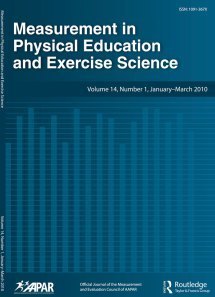 Mistakes in measuring error? Do such things get acknowledged? The Retraction Watch blog reports:
Mistakes in measuring error? Do such things get acknowledged? The Retraction Watch blog reports:
A paper published in Measurement in Physical Education and Exercise Science has been retracted for statistical and typographical mistakes.
Here’s the notice for “Comparing Measurement Error Between Two Different Methods of Measurement of Various Magnitudes”:
Due to errors, the statistical analyses of the manuscript titled “Comparing Measurement Error Between Two Different Methods of Measurement of Various Magnitudes” by Gerald S. Zavorsky (volume 14, issue 4, pages 265–274) are incorrect. For this reason, the aforementioned published article is officially retracted from this journal. Readers who are interested in a corrected version of the manuscript can contact the author directly (e-mail: zavorsky@marywood.edu).
The retracted article will remain online to maintain the scholarly record, but it will be digitally watermarked on each page as RETRACTED.
…

Does it matter for men (and pharma companies) whether they sit or stand?
 A new Dutch study on an old question — should men stand or sit when urinating? — just might weaken the revenue stream of pharma companies that offer treatments for male urinary ailments.
A new Dutch study on an old question — should men stand or sit when urinating? — just might weaken the revenue stream of pharma companies that offer treatments for male urinary ailments.
The researchers suggest (that is their word) that altering a man’s stance when urinating can sometimes be effective at treating some prostate-related (and similar) problems. Sometimes as effective, even, as treating the man with drugs.
The study, called “Urinating Standing versus Sitting: Position Is of Influence, in Men with Prostate Enlargement. A Systematic Review and Meta-Analysis,” was published in PLoS ONE, 9(7), 2014, e101320. Authors Ype de Jong, Johannes Henricus Francisca Maria Pinckaers, Robin Marco ten Brinck, Augustinus Aizo Beent Lycklama à Nijeholt, Olaf Matthijs Dekkers [pictured here] are at Leiden University Medical Center.

The team did a meta-analysis of previous studies that touch on those ailments. Their study of those studies says:
It is suggested that the body posture during urination can influence urodynamic parameters in patients with Lower Urinary Tract Symptoms (LUTS) to an extent approaching pharmacological interventions….
In healthy participants, no clear differences were found in any of the measured parameters for sitting versus standing position….
For healthy men, no difference is found in any of the urodynamic parameters. In patients with LUTS, the sitting position is linked with an improved urodynamic profile.
They add this kicker — a message to deliver directly to patients — at the very end of the report:
We conclude that the sitting posture is the best position for men with urination problems, e.g. due to an enlarged prostate to urinate in, whereas no difference was found in healthy men. This is clinically important, because residual urine may result in complications such as cystitis and bladder stones.
On recommending posturing versus medication, the Leiden study takes a traditionally cautious, don’t-overtly-rock-the-boat-except-ever-so-gently approach:
It is intriguing that the effect of changing to a sitting voiding posture – a simple intervention without any serious side effects – approaches the effect of conventional pharmacological treatment of LUTS. However, it should not be regarded as the sole therapy instead of pharmacological treatment, perhaps both interventions combined could have a synergistic effect on urodynamics in the management of LUTS.
The next step, if there is to be one, would be to compare two groups of ailing men — one group treated with pharmaceuticals, the other instead instructed to sit (or otherwise alter their stance so as to readjust their plumbing). The comparison could be extended, too, to include surgical intervention versus the other alternatives.
The university offers a press release (in Dutch) with a few additional details.

October 12, 2014
Coffee: Healthful or harmful? An emphatic maybe
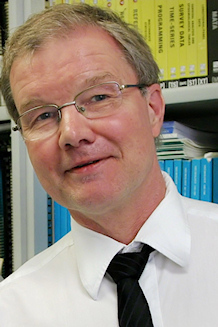 Here’s a new answer to the much-researched, much-debated question about whether drinking coffee helps boosts people’s health or harms them.
Here’s a new answer to the much-researched, much-debated question about whether drinking coffee helps boosts people’s health or harms them.
The answer appears in a newly published paper:
“Is it dangerous or beneficial to drink coffee? Reflections on a meta-analysis on risk at birth and a population study on risk in late life,” Ingmar Skoog, European Journal of Epidemiology, epub October 11, 2014.
Professor Ingmar Smoog (pictured here) is head of the Neuropsychiatric Epidemiology research group at the Centre for Health and Aging AGECAP at the Institute of Neuroscience and Physiology at the University of Gothenburg in Gothenburg, Sweden.
Professor Smoog appears (to the eyes of this non-specialist) to explain that he reaches no firm conclusion.
The final paragraph of Professor Smoog’s paper clarifies (or does not clarify) the situation, in wording that is (or is not) clear:
When using approaches such as meta-analyses, systematic reviews or pooling data, or doing any other evaluation of results from different studies, it needs to be emphasized that characteristics that may influence associations, i.e. factors which stimulate or inhibit the effect of another factor, including genetic or social heterogeneity, may differ considerably between different study locations, even within the same nations or even the same geographical area. Thus, an association may be true, even if it is not confirmed in all studies, and even if results are conflicting. This may be especially true regarding caffeine or coffee consumption, which differs between countries and socioeconomic groups. This is also important to keep in mind in a time when the research community is asking for ‘big data’, i.e. pooling of heterogeneous data sets from many different sources of different quality and with different methodologies and selection of study populations.

The Dunning-Kruger Effect and the vast evo-bio expertariat
The PressTurk web site discusses (in Turkish) how the Ig Nobel Prize-winning Dunning-Kruger Effect helps explain why there are so very, very many people who think they are experts on the subject of evolutionary biology.
Here’s part of the discussion, auto-translated into English:
Resulting from ignorance CourageDarwin, I have noticed it in the 19th century and had these words: “Ignorance more frequently information, but breeds confidence, persistently claiming this or that problem can not be solved with science, those who are not very conversant, are the least know.”
However, the effect of formal discovery and identification by experts, would wait until 1996. Dunning-Kruger Effect (Effect DK or DKA) seen on a specific subject incompetent or ignorant people, “the imaginary (delusional) sense of superiority”….
DK as a good example of the Impacts, nothing about evolutionary biology and science-based academic backgrounds of people who, themselves, for that matter “experts” may declare. These people on this issue because there is no proper ideas, about themselves “adequate” are counting. However, so far evolutionary biology about the only English quantities and only “evolutionary biology” category (general biology, paleontology, geology, physiology, chemistry, biomedical related fields, including even without), which was written around 100,000 articles published from all languages written in the 69,000 around academic books / chapters and are unaware of their contents. Because this subject is too far away, “knowledgeable about the subject” status are unaware of how they see themselves superior or adequate; They are unaware of the depth of ignorance….
The 2000 Ig Nobel Prize for psychology was awarded to David Dunning of Cornell University and Justin Kruger (then of the University of Illinois), for their modest report, “Unskilled and Unaware of It: How Difficulties in Recognizing One’s Own Incompetence Lead to Inflated Self-Assessments.” The study was published in the Journal of Personality and Social Psychology, vol. 77, no. 6, December 1999, pp. 1121-34.

October 11, 2014
Pills from the elders, Sausages from the extremely young
“Frozen Poop Pills Fight Life-Threatening Infections” is the headline on this report by Nancy Shute, for NPR’s Shots blog:
Fecal transplants can be life-saving for people with stubborn bacterial infections, but they’re not for the faint of heart. So doctors have come up with a way to make them more palatable – the frozen poop pill.
People infected with Clostridium difficile suffer debilitating diarrhea, but the bug often defies antibiotics. Doctors have recently discovered that a fecal transplant will restore good gut bacteria that banishes the C. diff. But the procedure is awkward, requiring a donation of fresh feces, usually from a relative, and a colonoscopy to deliver it.
Researchers at Massachusetts General Hospital figured they could improve on that….
 The researchers published details in a small (involving 20 patients) study:
The researchers published details in a small (involving 20 patients) study:
“Oral, Capsulized, Frozen Fecal Microbiota Transplantation for Relapsing Clostridium difficile Infection,” Ilan Youngster (pictured here), George H. Russell, Christina Pindar, Tomer Ziv-Baran, Jenny Sauk, Elizabeth L. Hohmann, Journal of the American Medical Association, epub October 11, 2014. They write:
“Objective To evaluate the safety and rate of resolution of diarrhea following administration of frozen FMT capsules from prescreened unrelated donors to patients with recurrent C difficile infection….
“Main Outcomes and Measures The primary end points were safety, assessed by adverse events of grade 2 or above, and clinical resolution of diarrhea with no relapse at 8 weeks. Secondary end points included improvement in subjective well-being per standardized questionnaires and daily number of bowel movements.”
Here’s further detail from the study:
The poop-pills research is not so distantly related to the work documented in the study honored with the 2014 Ig Nobel Prize for nutrition. That prize was awarded to Raquel Rubio, Anna Jofré, Belén Martín, Teresa Aymerich, and Margarita Garriga, for their study titled “Characterization of Lactic Acid Bacteria Isolated from Infant Faeces as Potential Probiotic Starter Cultures for Fermented Sausages.” The study was published in the journal Food Microbiology (vol. 38, 2014, pp. 303-311).
(Thanks to investigator Emi Gennis for bringing this to our attention.)

Marc Abrahams's Blog
- Marc Abrahams's profile
- 14 followers



